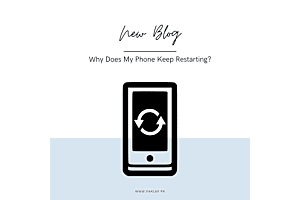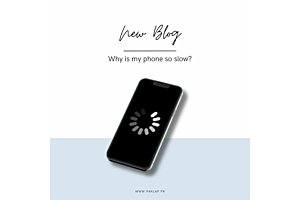Guide to Technology for senior citizens
With the right exposure and guidance, some seniors are on Facebook all day and can be seen tweeting about the weather. Others, however, might have a cell phone stored away somewhere to be used “only for emergencies.” Different people amongst the elderly have different needs and different abilities which gravitates them towards different kinds of technology.
Some may need a plastic pill organizer, others may need an electronic pill dispensing device, while someone else may need a daily reminder to take their medication. Different needs warrant the use of different devices and varying forms of technology.
You might think senior citizens are not embracing technology the way they should. The statistics show otherwise, with over 77% using basic cell phones and about 59% use the internet. Phones and tablets might seem like the only form of technology an elderly person can use, but there are other gadgets that seniors can use to help them with their day to day lives.
The elderly, however, face a barrier or two when it comes to using technology. With age, people become resistant to change. This makes them resistant to embracing newer technology. Some seniors might face socioeconomic barriers, where a new piece of tech seems too expensive to buy.
They may face physical barriers to using technology. Newer smartphones do offer large screens, but the icons and the text may be too small for an elderly person to use effectively, making it nothing but a hassle for them.
They might end up feeling all this effort is not going to be worth it at the end of the day, because they had gone so long without it. 35% of seniors disagree that they are missing out on important information, which goes to show that a chunk of the elderly has not adopted the new way of living a connected life, through technology.
There are a multitude of gadgets that can benefit the elderly. Regardless of cost, or the ability of the senior to use tech, there is something available for everyone.
Laptops: Laptops are convenient for seniors to use because of the portability that laptops offer; the ability to use them anywhere. Considering that some newer laptops come with a touch screen at an affordable price point, it could be beneficial for someone with hindered vision or motor skills.
Tablets: the iPad seems to work the best for the elderly. Although an iPad is pricey, cheaper ones are readily available on the second-hand market. Apple’s easy-to-use iOS operating system makes an iPad the best tablet for a senior citizen. A tablet will offer the elderly access to the web, the news, music, games, and apps, along with a camera and video recorder.
Cloud-based services: online services are all the hype these days. There are several online platforms geared towards the elderly, such as PawPawMail, an email system designed with senior citizens in mind who are rather unfamiliar with how email works.
Smartphones: the higher-end of the senior citizen-friendly tech spectrum. Smartphones these days come with large screens which can make it easier for senior citizens with visual difficulties to see text, and those with impaired motor skills to press larger icons.
Smartphones also come with options to zoom text, so you could make it as small or as large as needed. “Easy mode” on different devices makes the entire layout very simple to use and navigate and could be customized to show only those apps or shortcuts to features most needed by an elderly person.
Facebook: research shows that the younger generation is moving away from Facebook to newer apps and platforms, following the latest social media trends. However, for 50-65 years olds, Facebook is still “cool” and is a great way to allow seniors to stay in touch with their friends and family, share photos and videos while staying up-to-date with the latest news of the day.
Skype: Skype is a face-to-face video chat platform. The elderly can Skype with their friends and family, as this “in-person” ability provides seniors who live far away from their family and friends the ability to have more regular contact than just a phone call.
Home monitors: there are tons of ways to monitor the elderly at home. There are wireless sensors that can communicate information back to the caregiver. Several systems give the caregiver notifications when the elderly are on the move for fall and wandering prevention.
These systems include motion sensors, door alarms, bed monitors, and smart mats to monitor the individual. Some systems work wirelessly and can silently page the caregiver, while other, more sophisticated monitoring devices are used in assisted living facilities and old-age homes.
Automated reminder and check-in phone calls: one way to check in with the elderly is through an automated reminder system such as SageMinder Care Calls. The senior citizen must interact with their phone and receive the phone call.
The message is then relayed to the caregiver so he or she can tell if everything is alright. This is a great tool for someone who has other daytime commitments to take care of their elderly loved ones. This type of system is generally affordable and is easy for both the caregiver and senior to set up and use.
Medication reminder calls: this type of system can range from a phone call to a medication reminder watch and maybe even a pill dispensing medication box. These are all interactive methods to dispense medication on scheduled times and in specific dosages.
The caregiver is notified here too and can tell if there has been a problem with the administration of the required medication.
Personal Emergency Response Systems (PERS) or “Medical Alert” necklaces: these devices come in many forms. The senior citizen can wear a medical alert watch, necklace, or bracelet that will communicate at the push of a button if medical help is needed urgently.
These devices can be used for situations where a senior citizen falls and can’t find their way back up, making it easy and convenient for both the senior and the caregivers to take the appropriate measures needed,
Luminosity: this is a “brain-game” app that helps with cognitive ability and may even prevent Alzheimer’s Disease. Research has shown that similar brain-stimulating activities can help keep cognition intact and improve key brain functions like memory.
Online drug stores: as the home-delivery trend increases around the world, many drug stores have started their online stores as a way to purchase prescription drugs easily and conveniently. These online websites allow you to make your drug list, identify medication by appearance, and get any relevant information you may need about the drugs.
It is essential to consider the cost, usefulness, and abilities of the senior citizen who has to use the devices when you consider what form of technology to use with them. It is important to conduct your research based on where in the world you live in. Patience and understanding are also key, as it may be challenging for someone to use technology who is not acclimatized to it.
Article brought to you by Paklap.pk visit us for latest Tech Gadgets!





